6.07.2024
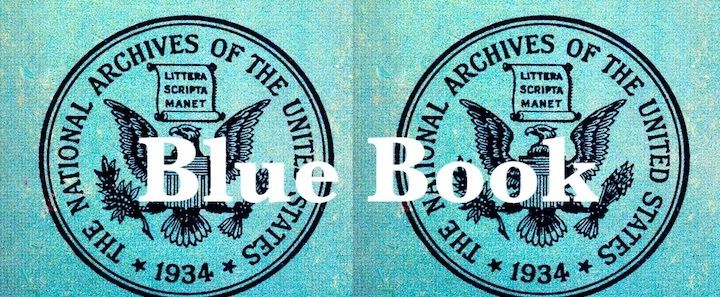
Project Blue Book case review: 1951
This is the latest edition of the Project Blue Book case review covering the year 1951. Like the previous evaluations, I tried to examine each case to see if the conclusion had merit. I added comments to help clarify the explanation or if I felt it was not correct or adequate. Items marked with red highlighting had photographs in the case file.
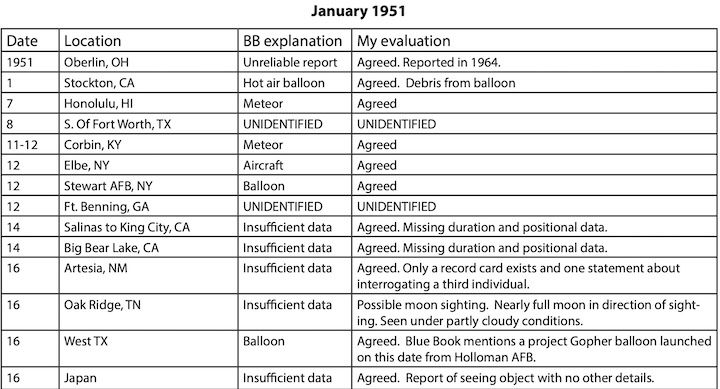
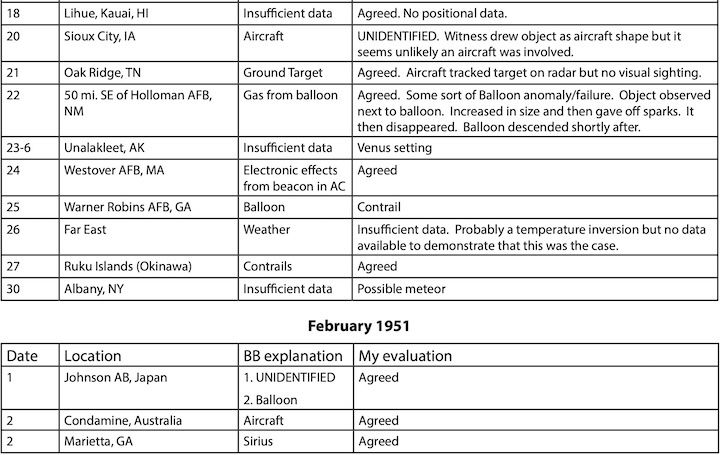
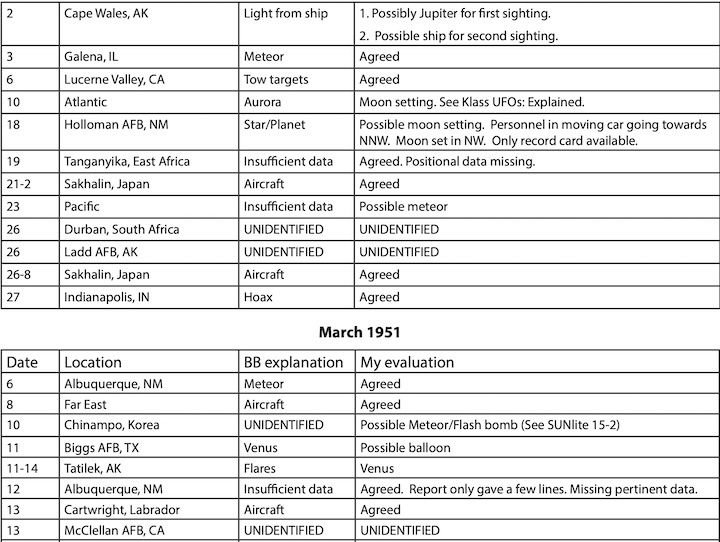

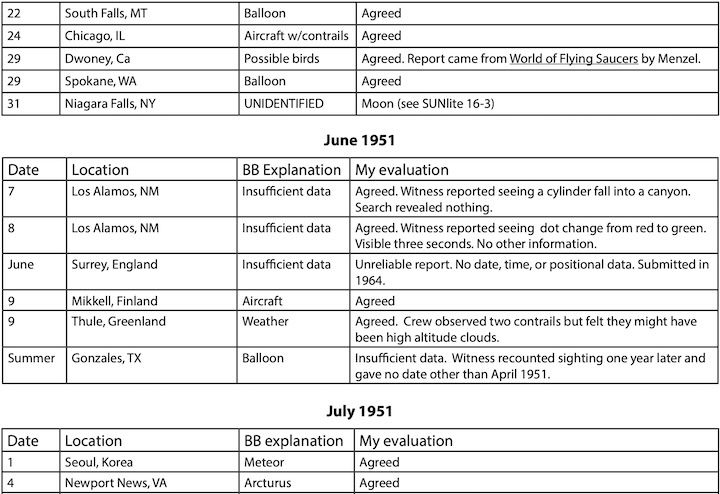
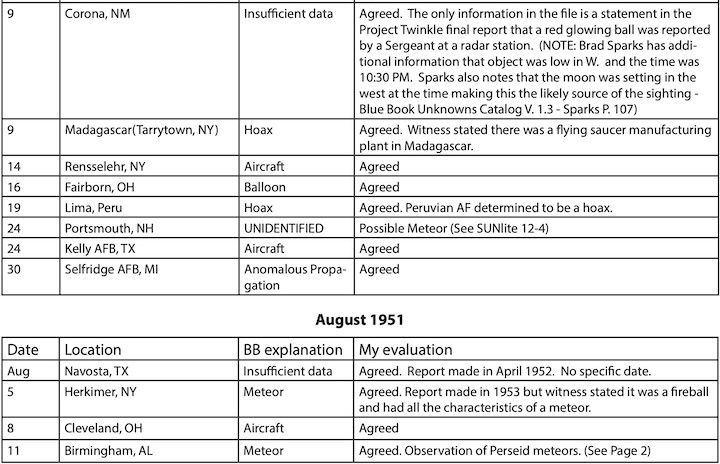

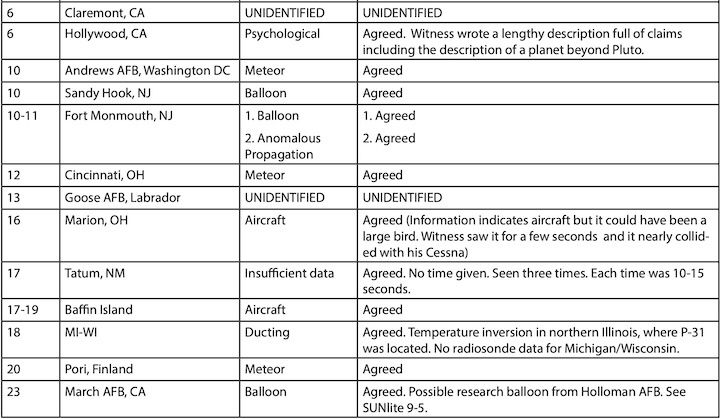
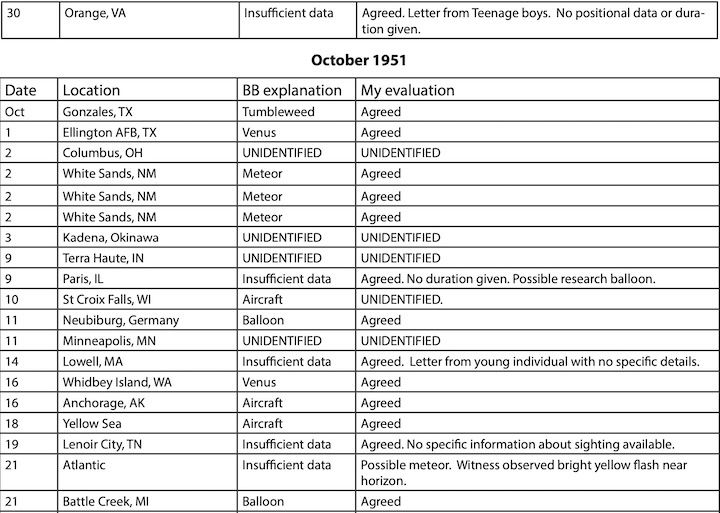

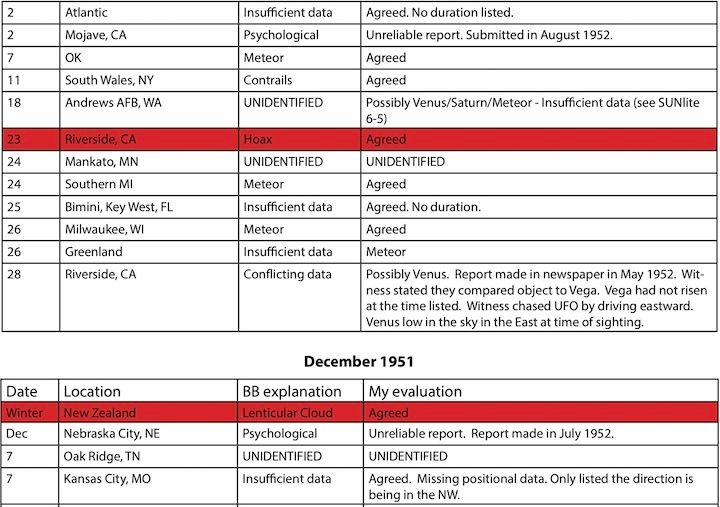

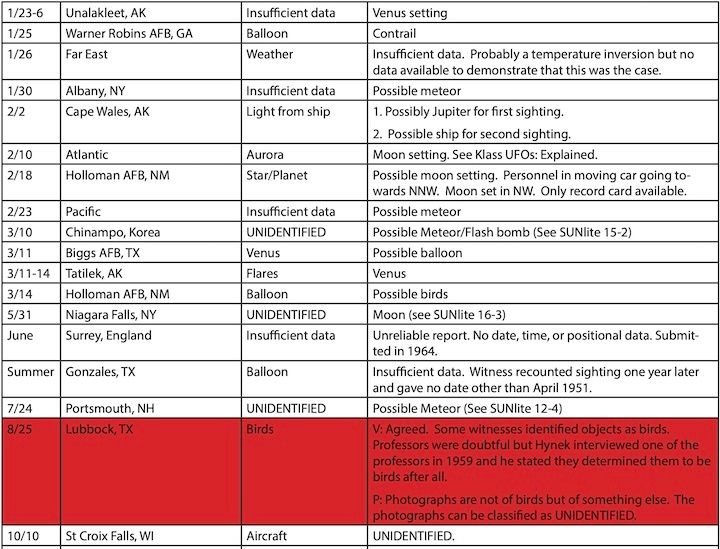
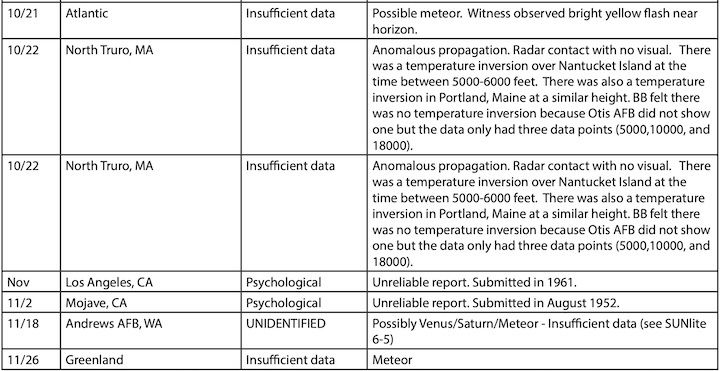

Summary
The reports from 1951 were very interesting. There were a lot of unidentifieds. Some of these I have since identified in the 701 club articles. However, there were other cases, that were identified that I shifted to unidentified. Both (January 20 Sioux City and October 10 St. Croix Falls) were listed as aircraft. I found the events could not be explained as aircraft or anything else I could propose. It is odd in the Sioux City case, that the witnesses did describe an object that sounded like a large aircraft. Despite this observation, I am not sure what kind of aircraft would have been involved in such an event.
The year 1951 also included the Lubbock Lights case. Looking at the file, I am of the opinion that the bird explanation had merit.
Originally, the professors, who conducted their investigation of the lights, felt they were not birds but it was noted in the file that they began to reconsider this solution after examining all the evidence. Apparently, they must have determined that birds was the most likely explanation because, in 1959, Hynek interviewed one of the professors and he stated they determined them to be birds.
There were also witness reports of them being birds because they saw the wings flapping. I did leave the photographs as unidentified because they did not seem to match what the witnesses were reporting. Most of them stated the lights were not that bright but the camera exposures seemed to show very bright lights.
The rest of the cases consisted mostly of the standard misidentifications. There was a radar case in October for North Truro, Massachusetts that was listed as insufficient information I found interesting. Grudge did ask for weather data but could find no indication of a temperature inversion. The problem with that was the file only gave three data points to see if a temperature inversion existed.
I checked the RAOBS website and found radiosonde data for nearby Nantucket island and they definitely recorded a temperature inversion, which might explain the radar returns. The only other nearby station data I could locate was Portland, Maine. It also recorded a temperature inversion near the same altitude. This confirms that a temperature inversion probably did exist over the region.
Herb Taylor sent me an e-mail disagreeing with my conclusion in SUNlite 16-3 for April 18, 1950 Clarendon, Texas. He informed me that the observations indicated something closer to earth than Venus. After re-reading the file, I agreed. It probably was a research balloon but exactly where the balloon came from is a mystery. As I like to point out, the stratospheric database is limited and does not contain all balloon launches in the United States. The description by the intercepting pilot does seem like he was describing a balloon. Therefore, I am changing the classification of this case from Grudge’s conclusion (Venus) to possible balloon.
Next issue, I begin my review of the year 1952. 1952, as most of the readers know, was a year full of UFO reports. It is going to take at least 4 issues to review all the cases.
Quelle: SUNlite 4/2024
